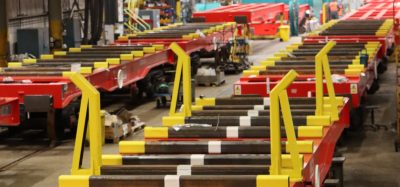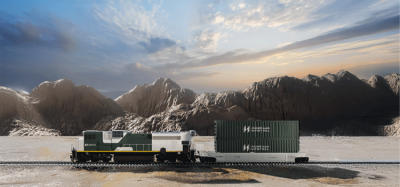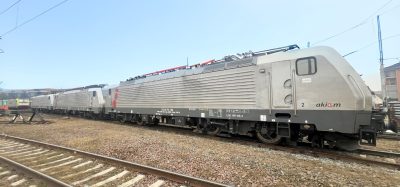The European idea
Posted: 23 January 2009 | | No comments yet
Camiel Eurlings, Minister of Transport, Public Works and Water Management in the Netherlands, explains his vision of freight transport by rail in Europe.
Camiel Eurlings, Minister of Transport, Public Works and Water Management in the Netherlands, explains his vision of freight transport by rail in Europe.
Not only does Europe have shared cultural roots but it should also cooperate at political and economic levels. This ‘European idea’ was a driving force behind the establishment of the European Union. I am particularly pro-European – no doubt this has something to do with my place of birth, Limburg, which lies between Germany and Belgium. My love for Europe was further stimulated during my time as a Member of the European Parliament. So, it is not strange that the key principle of the European idea – cooperation – constitutes the core of my vision of freight transport by rail.
When you look at the Netherlands and Belgium, you see that ports are connected with railway links to the hinterland. In this way they serve a considerable part of Europe. Things are running well, but they could be better. Economies and transport are growing. Worldwide, more goods are being transported and all transport flows are becoming increasingly complex.
Belgium and the Netherlands cooperate well together in this regard. For example in the Netherlands, the Betuwe Route has now been in service for almost two years. This is a 160km-long dedicated freight railway line. In Belgium, the Montzen Line has been operating for almost a century as a major axial route for freight transportation. I am talking about railways here and they are necessary. But transport crosses national borders, so our thinking has to cross borders too. To put it simply: we need railway corridors.
This is an important pillar of Dutch policy: we would like to see railway corridors running to Southern Europe as well as Eastern Europe. Recently, I responded positively to a Belgian proposal to extend corridor F (Brest-Warsaw-Berlin-Duisburg) to Antwerp. I added that such an extension would be of benefit to all the Benelux ports: Antwerp, Zeebrugge, Rotterdam and Amsterdam.
In addition, it is in the interests of the Benelux that corridor A (Rotterdam-Genoa) and corridor C (Antwerp-Lyons/Basel) run smoothly together for the transport of freight to Southern Europe. In this connection I would like to investigate with Belgium, France and Luxembourg, the extension of corridor C to Rotterdam.
The formation of a freight corridor is virtually never coupled to a new railway line. The tracks are usually present already. Rather, what is involved is collective planning, the mutual acceptance of train drivers and rolling stock, resolving punctuality problems and removing unnecessary delays at borders. Improvements are often needed in these areas in order to make a railway line into a true corridor.
The tracks on which the trains will run also need to be defined, as does the track capacity needed in the short to long term. Agreements have to be made about these issues with neighbouring countries. I have in mind, for instance, the arrangements my predecessor Karla Peijs made with Germany in January 2007 about building a third track to extend the railway capacity from the Betuwe Route up to Oberhausen. The important issue where corridors are concerned is what obstacles have to be removed so that freight can be transported smoothly.
An important prerequisite for the proper functioning of corridors is investing in the European Rail Traffic Management System (ERMTS). This high-quality safety system is becoming the backbone of the European network of freight railway lines. ERTMS offers interoperability for rolling stock, it is safe and it has the potential to improve the reliability and capacity of the infrastructure.
So, railway corridors are actually perfect elaborations of the European idea. That is why the Netherlands is such a firm supporter of establishing such railway corridors in Europe. Luckily, we are not alone in this endeavour. The European Commission presented a legal proposal for freight corridors in December 2008.
However, in one particular area, the Netherlands has already carried out a great deal of work, and we would like to see more far-reaching actions: namely policy for reducing the noise produced by rolling stock. This often means retrofitting rolling stock. As this is up to the hauliers and owners of the rolling stock, it is a difficult issue to tackle. One solution is the use of incentive measures such as differentiation in the infrastructure charges. In this connection, given their international nature, the corridors could also play a major role.
That is the idea of corridors and we firmly support these objectives, but as a single country you cannot get very far. Noisy trains enter the Netherlands while our quieter trains depart for distant shores – the issue of noise reduction is presenting us with a problem. And so, until we manage to align all the parties involved, the Netherlands will continue to draw attention to this issue.






